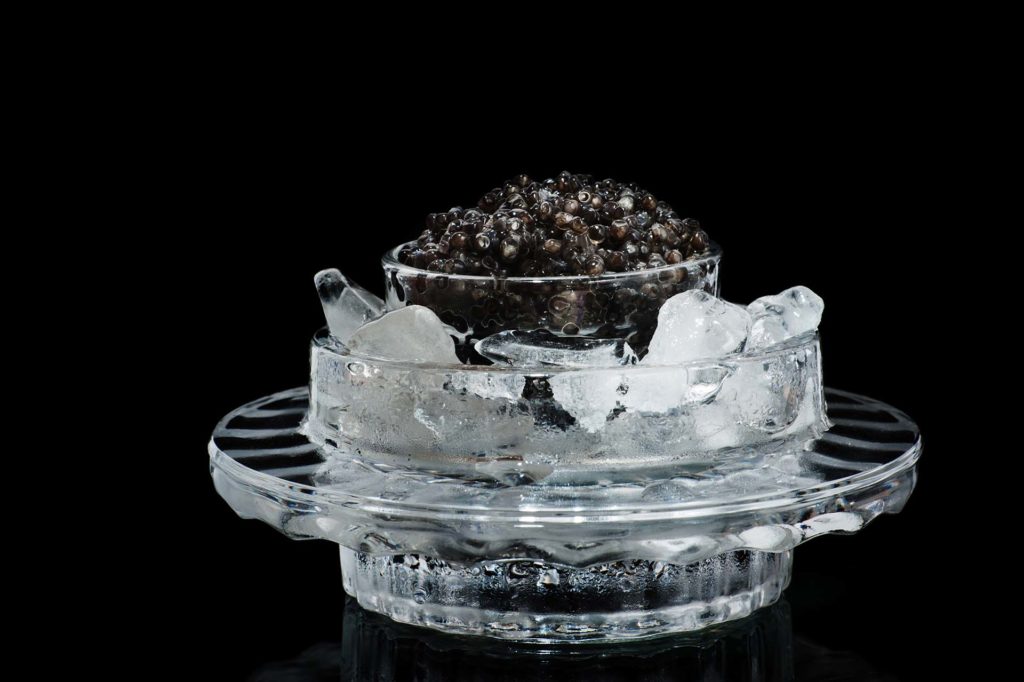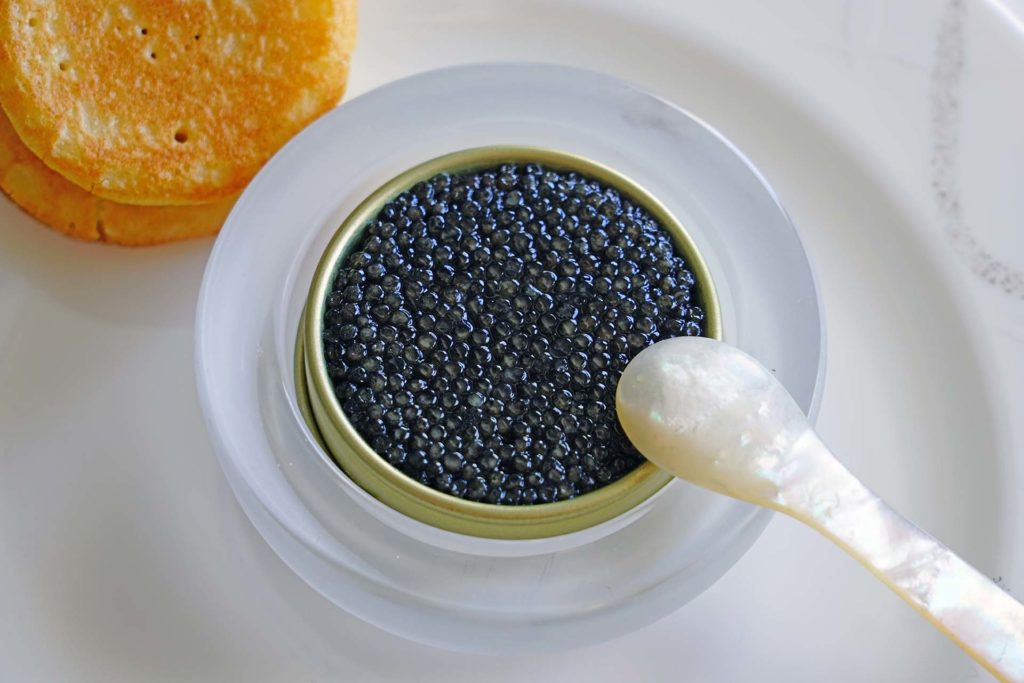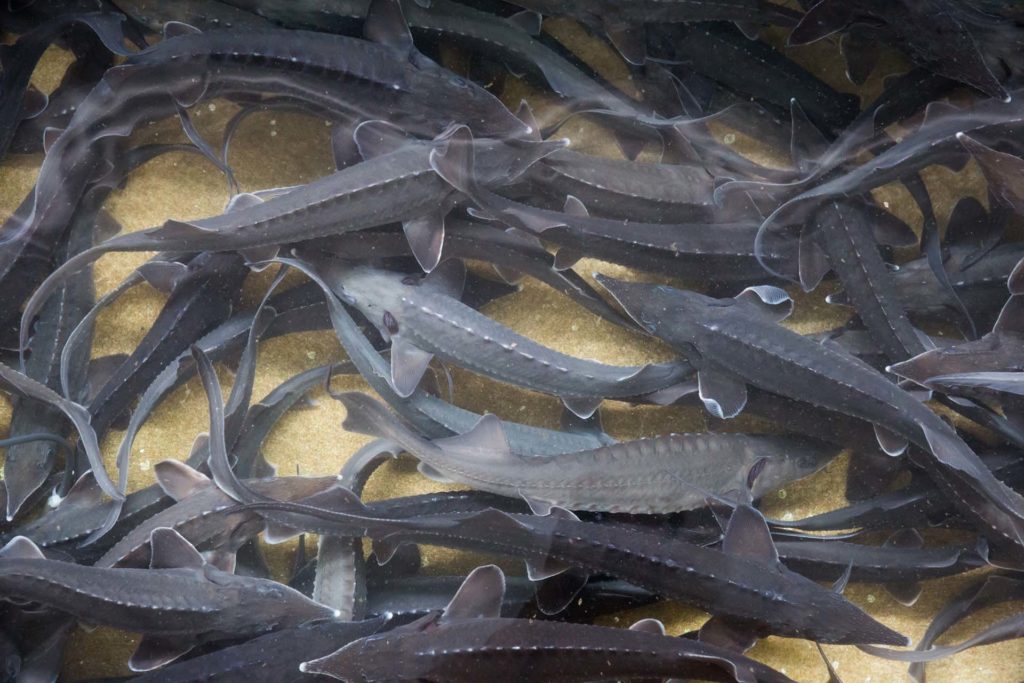
Exploring Kaluga Caviar – What Makes This Delicacy Unique?
Are you wondering why fish roe, especially kaluga caviar is so special? Learn all about this delicacy that will make every bite a unique experience.

The very word caviar conjures up images of luxury, refinement, and exclusivity. For centuries, this precious delicacy has been prized by royalty, aristocrats, and connoisseurs alike, and its reputation as a symbol of wealth and sophistication has never waned. But the history of caviar is far more than just a tale of gastronomic indulgence – it is a fascinating journey through the cultures, economies, and politics of the world’s most powerful nations.
From the Caspian Sea to the royal courts of Europe, from the sturgeon farms of California to the black markets of the Soviet Union, the story of the delicacy of the sea is one of passion, greed, innovation, and controversy. So come with us on a journey through time as we explore the fascinating and often surprising history of one of the world’s most luxurious foods.
What is caviar? It is not just a luxury food item – it is a cultural icon that has been embedded in human history for centuries. The significance of its history is rooted in the cultural, social, and economic influences that have shaped the world over time. From its origins in the Caspian Sea to its rise to popularity among European royalty, caviar has played a significant role in the evolution of global trade and commerce.
But beyond its economic significance, caviar for sale has also become a symbol of exclusivity, sophistication, and refined taste, enjoyed by the world’s elite and revered in popular culture.
This delicacy has played a significant role in various societies throughout history, serving as a symbol of wealth, prestige, and cultural identity. Its origins can be traced back to the ancient Persians, who first discovered the delicacy of sturgeon eggs, and it has since become a staple in many cultures around the world. Here is a brief overview of the history of caviar in different regions:
In conclusion, caviar has a rich and varied history in many countries around the world, from its association with Russian royalty to its incorporation into French cuisine and its emergence as a major industry in China. Despite challenges such as overfishing and pollution, the caviar industry continues to evolve and adapt to changing consumer tastes and environmental concerns.
The consumption of caviar varies by country and region, but traditionally, it has been most popular in Russia and Europe. Historically, Russia was one of caviar’s largest producers and consumers, and the food remains an important part of Russian cuisine and culture. In Europe, France has been a major consumer and producer of caviar since the early 20th century.
In recent years, China has emerged as a significant consumer of sevruga eggs, as the country has become one of the world’s largest producers of farmed caviar. In addition, this luxurious food has become increasingly popular in the United States as domestic production has grown, and many American chefs have incorporated it into their cuisine.

The history of caviar dates back thousands of years and has been harvested and consumed in various ways by different cultures throughout history. Originally, caviar was harvested by fishing wild sturgeon in the Caspian and Black Sea regions. The eggs were extracted and then processed with salt to preserve them for long-term storage and transportation.
In the early 20th century, commercial fishing of sturgeon for caviar became widespread, leading to overfishing and depletion of the sturgeon population. This led to efforts to regulate the trade and protect the sturgeon populations, including the establishment of fishing quotas and bans on certain fishing practices.
As a result, caviar farms began to emerge in the 20th century, using artificial insemination techniques to breed sturgeon in captivity and extract their eggs for production. These farms have become increasingly popular as they provide a sustainable alternative to wild-caught sturgeon.
In the United States, this salted roe became a fashionable food item in the early 20th century, particularly among the wealthy and influential. It was seen as a status symbol, and high-end restaurants and hotels began to include it on their menus. Sturgeon roe also became a popular gift item, and wealthy Americans would purchase caviar as a gift for special occasions.

Sturgeon eggs come in a variety of sizes, textures, and flavors, each with its unique characteristics and culinary applications. From the luxurious and expensive beluga and ossetra caviar to the more affordable alternatives, there is a type of sturgeon egg to suit every taste and budget. Here are some of the most popular types that will make you order caviar online as soon as possible:
In modern times, the popularity of caviar has led to concerns about the overfishing of sturgeon, and efforts are being made to promote sustainable caviar farming practices. Despite these challenges, the cultural significance of caviar remains strong, and it continues to be enjoyed by many as a luxurious and exclusive delicacy.
However, everyone figured something had to be done and turned unsustainable traditional methods into more sustainable practices. That being said, the modern process of producing this delicacy has evolved significantly over time. So, let’s check how it’s achieved:
Overall, the modern process of production is focused on sustainability, quality, and the preservation of the exquisite flavor of the product. While the methods have evolved over time, the goal of producing the highest quality of this delicacy remains the same.

The process of caviar production has evolved, particularly in response to concerns about overfishing and the depletion of sturgeon populations. In the past, wild sturgeon was the primary source of caviar, and its exploitation led to a decline in sturgeon populations and increased regulation of the caviar trade.
Today, sustainable aquaculture methods have become increasingly popular, and many producers now rely on captive-bred sturgeon for their eggs. These methods not only help to conserve wild sturgeon populations but also ensure a consistent supply of high-quality caviar.
The impact of technology on the caviar industry has been significant, particularly in recent years. With the rise of aquaculture and advances in production methods, sturgeon roe is now more widely available and affordable than ever before. Here are some of the ways that technology and industry have affected the industry:
The Convention on International Trade in Endangered Species of Wild Fauna and Flora (CITES) has regulated the international trade of sturgeon and their products, including caviar, since the 1970s. This was in response to concerns about overfishing and the depletion of sturgeon populations in the wild.
Overfishing, pollution, and other factors have had a significant impact on the decline in caviar production and consumption in recent years. Here are some of the key factors that have contributed to this decline:
Efforts to protect endangered sturgeon populations have become increasingly important in recent years, as the depletion of these fish could have serious environmental, economic, and cultural consequences. Sturgeon are a keystone species in many ecosystems, and their loss could have ripple effects on other aquatic wildlife and the health of freshwater habitats.
Sturgeons are an important cultural and culinary resource, and the loss of these fish could have significant cultural and economic impacts. To address these challenges, governments, conservation organizations, and the caviar industry have come together to promote sustainable and responsible practices that protect sturgeon populations while ensuring a consistent supply of high-quality products.
Although it’s a more complex process than many people think, it’s manageable. Through fishing regulations, aquaculture, habitat restoration, research, and consumer education, we can work to ensure that sturgeon populations thrive for generations to come.

Salted sturgeon eggs have a unique flavor and texture that cannot be replicated by any other food. Its briny, salty taste and delicate texture are highly sought after by food connoisseurs, and its distinctiveness has helped to maintain its cultural relevance and status as a luxury item – the rarest types, such as Beluga, can cost hundreds or even thousands of dollars per ounce.
This food is a versatile ingredient that can be used in a wide range of culinary applications, from topping a simple cracker to adding a touch of elegance to a high-end dish. Its versatility has helped to keep it relevant in contemporary cuisine, where chefs are constantly seeking new and innovative ways to use it.
While it is still considered a luxury food item, the cultural significance of this salted roe has changed in many ways. In the past, salted sturgeon eggs were primarily consumed by the wealthy and were seen as a symbol of power and status. However, in recent years, its availability has increased, and it is now more widely accessible to a broader range of consumers.
Additionally, the perception of luxury has also evolved, and while caviar is still considered a luxurious food item, many consumers now prioritize sustainability, ethical sourcing, and health when making purchasing decisions.
That being said, it is still considered a symbol of luxury. People still like it, and it remains a popular ingredient in high-end cuisine, often served at special occasions and events. However, its role in modern culture is not quite the same as it was in the past, and the dish is now often appreciated for its unique flavor and texture rather than solely for its exclusivity and status.

There are many new and innovative ways to serve and pair the savory sturgeon roe, from sushi and eggs to vodka and champagne. By experimenting with different flavors and textures, you can create a unique and memorable dining experience that enhances the natural flavors of this delicious delicacy. Here are some of the most popular options for how to serve it after buying caviar at an online store:
This delicacy has come a long way to receive its status as a luxury item. From the ancient Persians to modern-day consumers, caviar has been revered for its unique flavor and texture, as well as its associations with luxury, wealth, and refinement. Despite challenges such as overfishing, pollution, and changing consumer tastes, the caviar industry has adapted and innovated to meet the demands of the contemporary market while also promoting sustainability and responsible sourcing practices.
If you’re eager to try this iconic food, you definitely need to check out our caviar shop. We at K&Cie Caviars have the best caviar selection, and it doesn’t matter if you’re a beginner or not – your palate deserves no less than perfect taste. So, buy caviar online and immerse yourself in endless posh fish egg tasting.
Blogues connexes

Are you wondering why fish roe, especially kaluga caviar is so special? Learn all about this delicacy that will make every bite a unique experience.

What makes osetra caviar unique? From its rich flavor to its luxurious texture, learn all about this delicacy and enjoy every bite.

Wondering whether eating fish roe has any health benefits? Learn all about caviar nutrition and how it can boost your well-being.
Plan du site
Société
K&cie Sàrl
Route de Crassier 61
1299 Crans-près-Céligny
TVA CHE-383.472.711
Contatez nous
Droits d'auteur 2023, K&cie Sàrl, Tous droits réservés.
Développé par Made Online